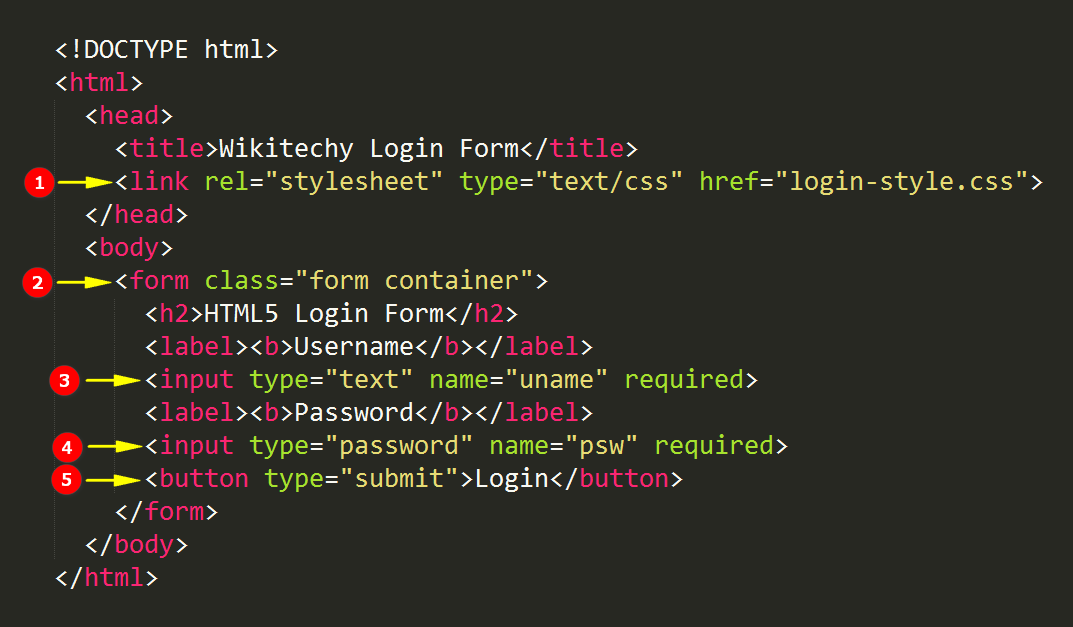Develop Login Form In PHP
Many interactive websites nowadays require a user to log in into the website’s system to provide a customized experience for the user. Once the user has logged in, the website will be able to provide a presentation that is personalized to the user’s preferences.
A basic login system typically contains 3 components which can be created using PHP and MySQL :
Component 1: Allows registration of preferred login Id and password.
This is created in simple HTML form that contains 3 fields and 2 buttons:
1. A preferred login id field
2. A preferred password field
3. A valid email address field
4. A Submit button
5. A Reset button

Lets say the form is coded into a file named register.html. The following HTML code extract is a typical example. When the user has filled in all the fields and clicks on the submit button, the register.php page is called for.
[form name=”register” method=”post” action=”register.php”]
[input name=”login id” type=”text” value=”loginid” size=”20″/][br]
[input name=”password” type=”text” value=”password” size=”20″/][br]
[input name=”email” type=”text” value=”email” size=”50″/][br]
[input type=”submit” name=”submit” value=”submit”/]
[input type=”reset” name=”reset” value=”reset”/]
[/form]
The following code extract can also be used as part of register.php to process the registration. The code connects to the MySQL database and inserts a line of data into the table used to store the registration information.
@mysql_connect(“localhost”, “mysql_login”, “mysql_pwd”) or die(“Cannot connect to DB!”);
@mysql_select_db(“tbl_login”) or die(“Cannot select DB!”);
$sql=”INSERT INTO login_tbl (loginid, password and email) VALUES (“.$loginid.”,”.$password.”,”.$email.”)”;
$r = mysql_query($sql);
if(!$r) {
$err=mysql_error();
print $err;
exit();
}
The code extract assumes that the MySQL table that is used to store the registration data is named tbl_login and contains 3 fields – the loginid, password and email fields. The values of the $loginid, $password and $email variables are passed in from the form in register.html using the post method.
Component 2: Verification and authentication of the user.
In this the HTML form typically contains 2 fields and 2 buttons:
1. A login id field
2. A password field
3. A Submit button
4. A Reset button
Assume that such a form is coded into a file named authenticate.html. The following HTML code extract is a typical example. When the user has filled in all the fields, the authenticate.php page is called when the user clicks on the Submit button.
[form name=”authenticate” method=”post” action=”authenticate.php”]
[input name=”login id” type=”text” value=”loginid” size=”20″/][br]
[input name=”password” type=”text” value=”password” size=”20″/][br]
[input type=”submit” name=”submit” value=”submit”/]
[input type=”reset” name=”reset” value=”reset”/]
[/form]
The following code extract can be used as part of authenticate.php to process the login request. It connects to the MySQL database and queries the table used to store the registration information.
@mysql_connect(“localhost”, “mysql_login”, “mysql_pwd”) or die(“Cannot connect to DB!”);
@mysql_select_db(“tbl_login”) or die(“Cannot select DB!”);
$sql=”SELECT loginid FROM login_tbl WHERE loginid=’”.$loginid.”‘ and password=’”.$password.”‘”;
$r = mysql_query($sql);
if(!$r) {
$err=mysql_error();
print $err;
exit();
}
if(mysql_affected_rows()==0){
print “no such login in the system. please try again.”;
exit();
}
else{
print “successfully logged into system.”;
//proceed to perform website’s functionality – e.g. present information to the user
}
As in component 1, the code excerpt assumes that the MySQL table that is used to store the registration data is named tbl_login and contains 3 fields – the loginid, password and email fields. The values of the $loginid and $password variables are passed in from the form in authenticate.html using the post method.
Component 3: When the user forgets his logion password this 3rd component sends his password to the users registered email address.
